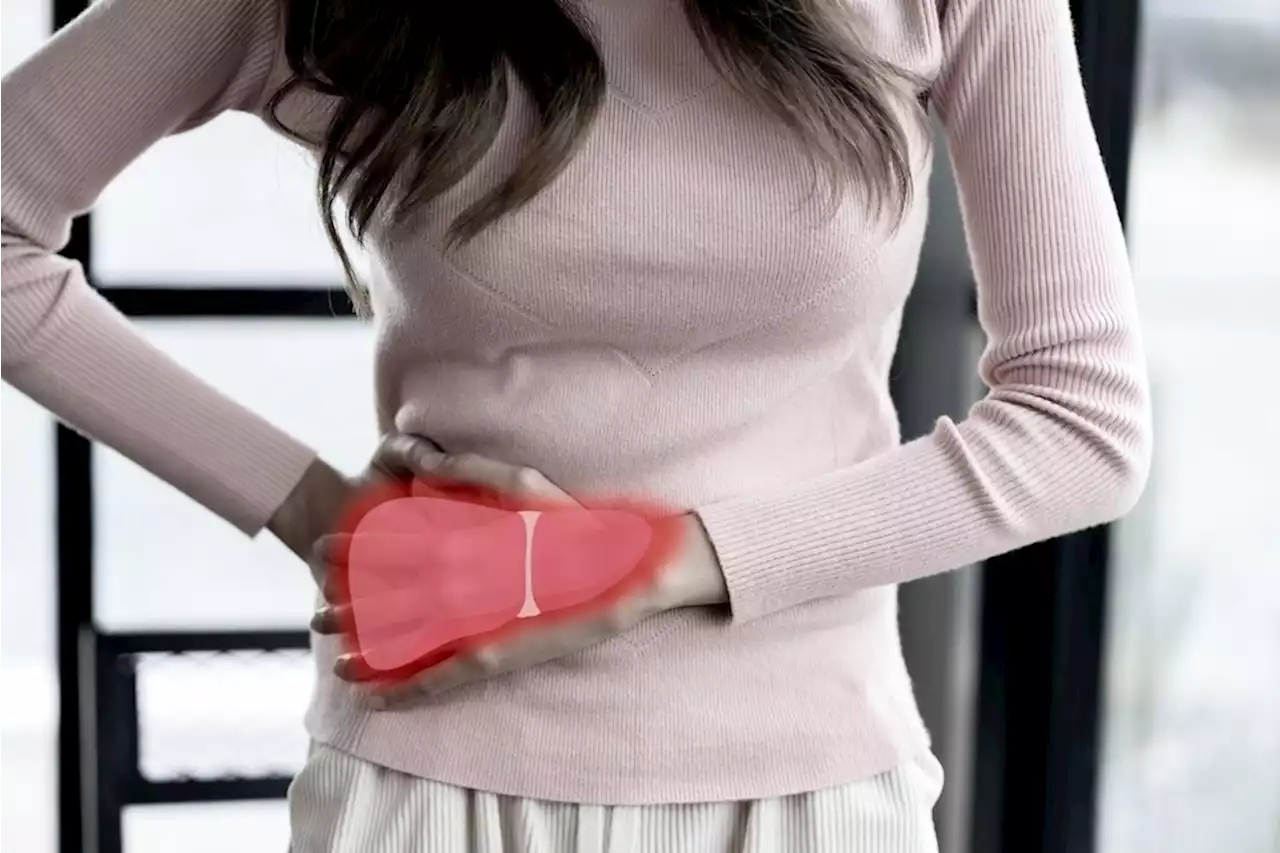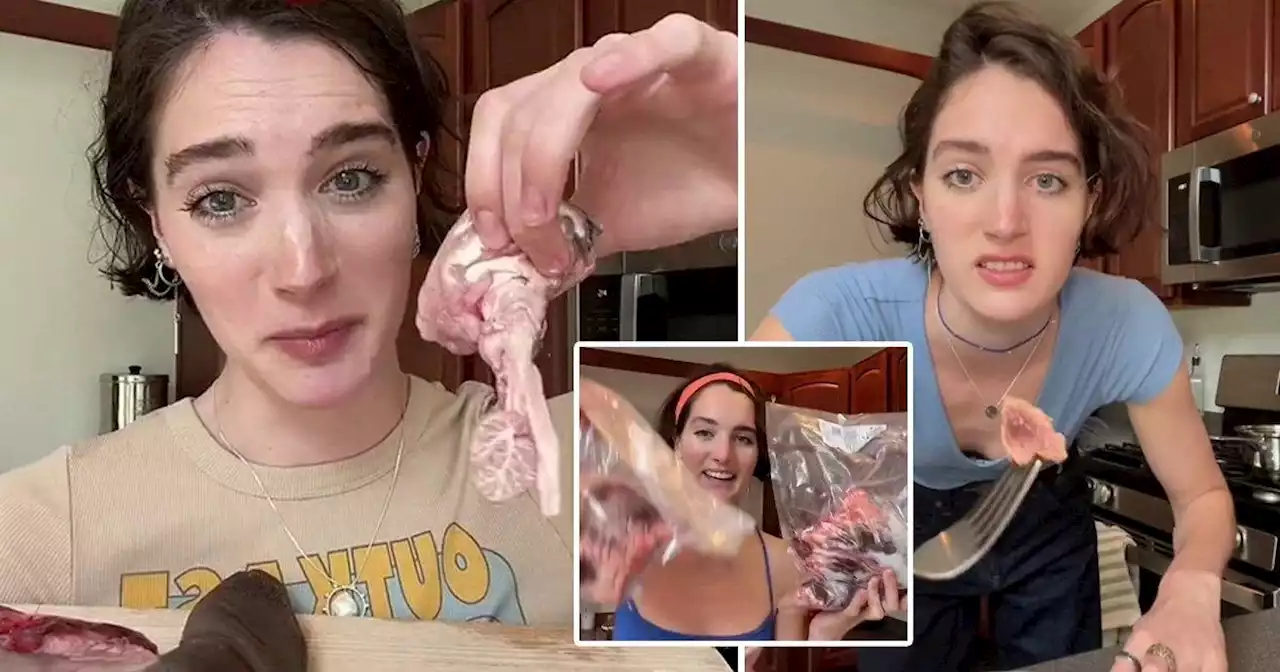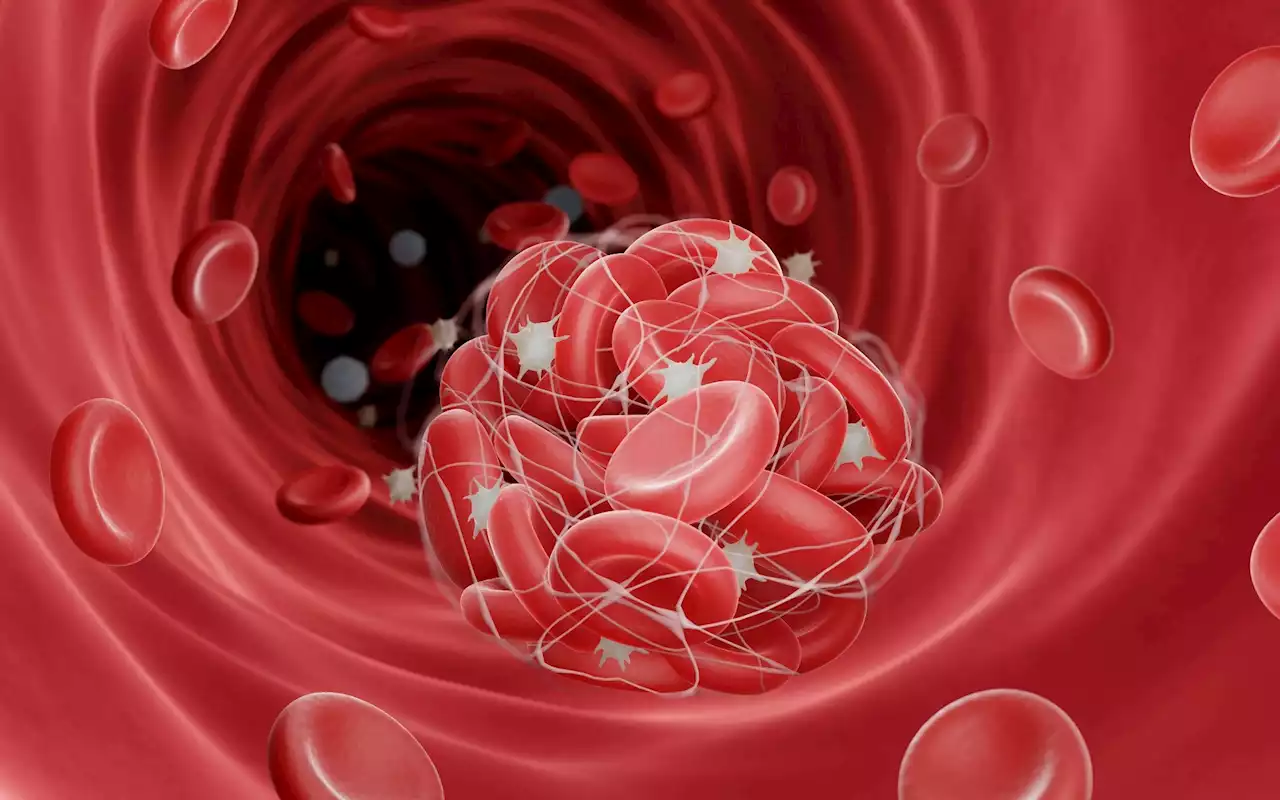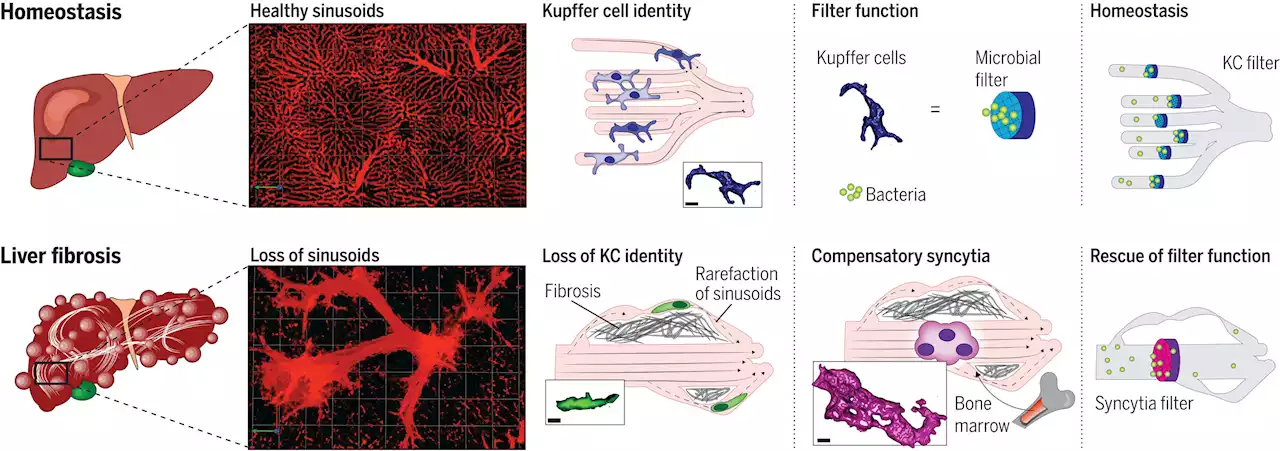A team of researchers has uncovered a previously unknown compensatory mechanism found in liver disease. If Kupffer cells (KCs), a specific kind of immune cells found in the liver, become impaired by tissue scarring, immune cells originating in the bone marrow flow to the organ, where they form larger cell clusters to perform the same function.
, damage to the liver causes a buildup of scar tissue known as fibrosis, which impairs the organ's function. In the advanced stage of this tissue remodeling process, the area around the Kupffer cells also undergoes fateful changes—with consequences that were unknown until now.
Dr. Moritz Peiseler, a scientist and physician at the Department of Hepatology and Gastroenterology at Charité and the first author of the study, describes what takes place during scarring and remodeling of the liver:"More and more liver cells die off. Connective tissue forms all through the organ and around the small blood vessels."
The newly formed KC-like syncytia take over the filtration function of the actual Kupffer cells from then on. Since they have to exist inside changed blood vessels, the immune cells that have migrated to the site adapt, forming net-like structures that turn them into an effective microbial filter. The researchers describe the molecular mechanisms involved in these processes in their work.
Australia Latest News, Australia Headlines
Similar News:You can also read news stories similar to this one that we have collected from other news sources.
 How liver cells become scarring, and worseHepatic fibrosis occurs when scar tissue replaces damaged cells in the liver. Over time, accumulating scarring distorts the liver, interferes with its blood supply and may progressively lead to worsening consequences, from cirrhosis to liver failure to liver cancer. In advanced cases, the only treatment is an organ transplant.
How liver cells become scarring, and worseHepatic fibrosis occurs when scar tissue replaces damaged cells in the liver. Over time, accumulating scarring distorts the liver, interferes with its blood supply and may progressively lead to worsening consequences, from cirrhosis to liver failure to liver cancer. In advanced cases, the only treatment is an organ transplant.
Read more »
 Fatty liver disease susceptibility: study identifies interaction between estrogen receptor and genetic variant in womenResearchers pursued evidence of whether the interaction between the patatin-like phospholipase domain-containing 3 p.I148M variant and the female sex at the genetic and molecular level explains why premenopausal women remain protected against fatty liver disease, while a rapidly progressive disease ensues in some peri- and postmenopausal women.
Fatty liver disease susceptibility: study identifies interaction between estrogen receptor and genetic variant in womenResearchers pursued evidence of whether the interaction between the patatin-like phospholipase domain-containing 3 p.I148M variant and the female sex at the genetic and molecular level explains why premenopausal women remain protected against fatty liver disease, while a rapidly progressive disease ensues in some peri- and postmenopausal women.
Read more »
 Dog ate 25 seeds that can cause liver failure on autumn walkOllie was rushed to the vet where experts said the tannins could cause liver and kidney failure
Dog ate 25 seeds that can cause liver failure on autumn walkOllie was rushed to the vet where experts said the tannins could cause liver and kidney failure
Read more »
 Staffordshire liver disease specialist Dr Alison Brind honouredDr Alison Brind, who has pancreatic cancer, is recognised for her work with liver disease patients.
Staffordshire liver disease specialist Dr Alison Brind honouredDr Alison Brind, who has pancreatic cancer, is recognised for her work with liver disease patients.
Read more »
 Former vegan says eating heart, brains and liver has helped get her life back'I'm learning to use food as medicine.'
Former vegan says eating heart, brains and liver has helped get her life back'I'm learning to use food as medicine.'
Read more »
 Non-alcoholic fatty liver disease linked to higher risk of blood clots in healthy adultsRecent study in Scientific Reports finds a link between nonalcoholic fatty liver disease (NAFLD) and a higher risk of venous thromboembolism (VTE) among healthy Korean adults. The research suggests that NAFLD may contribute to a hypercoagulable state, increasing the risk of VTE.
Non-alcoholic fatty liver disease linked to higher risk of blood clots in healthy adultsRecent study in Scientific Reports finds a link between nonalcoholic fatty liver disease (NAFLD) and a higher risk of venous thromboembolism (VTE) among healthy Korean adults. The research suggests that NAFLD may contribute to a hypercoagulable state, increasing the risk of VTE.
Read more »
